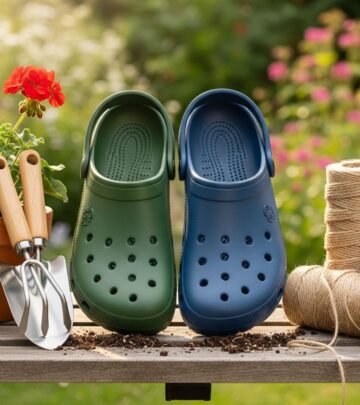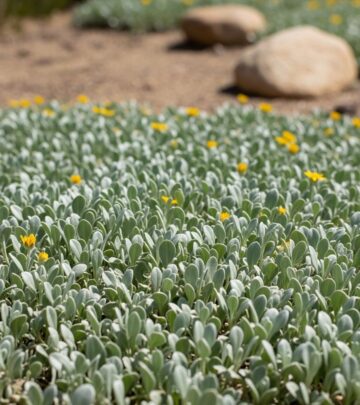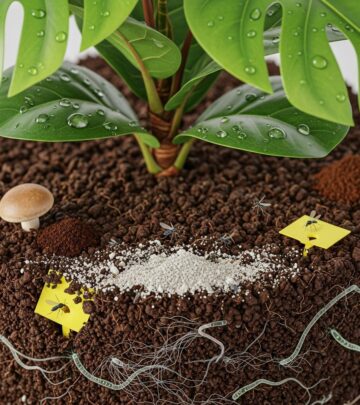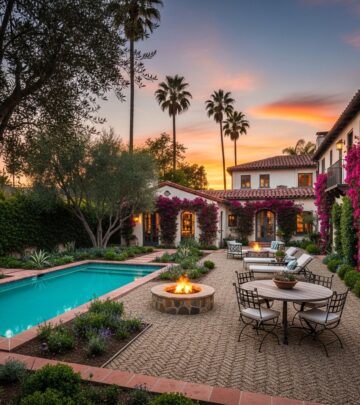Xeriscape Garden Design: 3 Steps For Sustainable Santa Fe Yard
Sustainable landscaping and water conservation for Santa Fe gardens
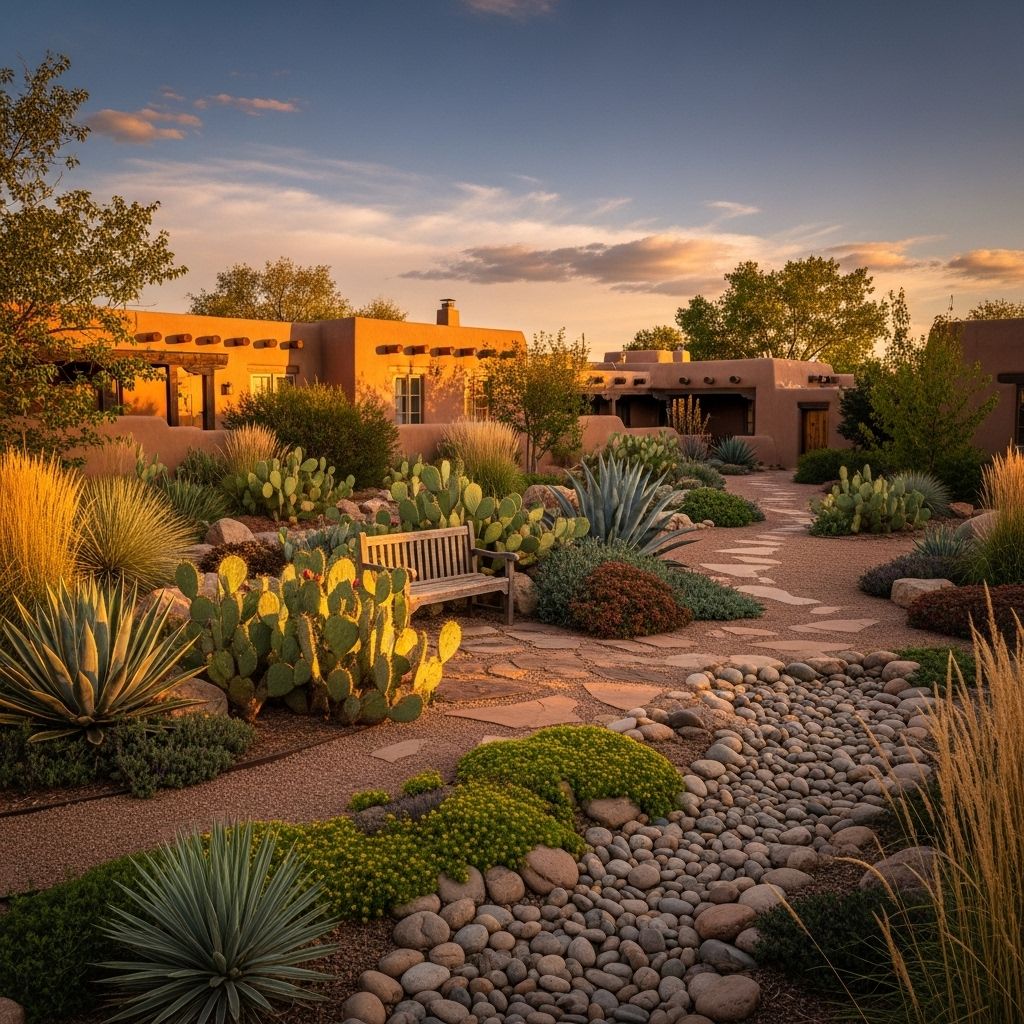
Image: HearthJunction Design Team
Water Wisdom: Eco-Friendly Santa Fe Garden Design
Introduction: The Art of Eco-Friendly Gardening in Santa Fe
Santa Fe’s high desert environment presents unique challenges and opportunities for gardeners. With limited water resources and a picturesque natural landscape, creating a garden that is both beautiful and sustainable requires careful planning and a commitment to water consciousness. This article explores the xeriscape approach, highlighting soil preparation, water harvesting, and the use of regionally suitable plants to design low-maintenance, environmentally sensitive gardens that enhance both property value and ecological harmony.
The Xeriscape Philosophy: Three Basic Steps
As outlined by experts like David Salman of Santa Fe Greenhouses and High Country Gardens, xeriscaping in Santa Fe revolves around three foundational elements:
- Soil Preparation: Healthy soil is the bedrock of any successful garden. In Santa Fe, this means amending the often clay-heavy, alkaline soil to improve drainage and fertility, ensuring plants can establish strong root systems and thrive with less water.
- Water Harvesting: Capturing precious rainwater and runoff is essential in a region where every drop counts. Techniques such as rain gardens, swales, and cisterns help maximize the use of natural precipitation and reduce reliance on municipal water.
- Regionally Suitable Plants: Choosing plants native or adapted to Santa Fe’s climate ensures they require minimal supplemental water, fertilizer, and pest control, while also supporting local wildlife and biodiversity.
Embracing Water Consciousness
At the heart of the xeriscape approach is water consciousness—minimizing water needs, capturing what falls naturally, and respecting the surrounding landscape. This mindset not only conserves resources but also creates gardens that are in harmony with their environment.
One example is the transformation of a property by designer Bone, who added a living tapestry of plants around a house to create a contemporary, site-sensitive, low-maintenance garden. This project exemplifies how gardens can be both visually striking and ecologically responsible, blending texture, color, and sustainability.
Soil Preparation: The Foundation of a Healthy Garden
Understanding Santa Fe’s Soil
Santa Fe’s native soil is often heavy in clay and alkaline, which can restrict root growth and water penetration. Amending soil with organic matter such as compost, leaf mold, or well-aged manure improves its structure, increases microbial activity, and enhances its ability to retain moisture and nutrients.
Steps to Improve Soil
- Test your soil to determine its pH and composition.
- Incorporate organic matter to improve drainage and fertility.
- Use grit or sand for further drainage in areas prone to waterlogging.
- Apply mulch to protect soil from erosion and retain moisture.
Water Harvesting: Making the Most of Every Drop
Water is a precious resource in Santa Fe, and maximizing its capture and use is essential for sustainable gardening.
Types of Water Harvesting Techniques
- Rain Gardens and Swales: These shallow depressions or channels slow, capture, and filter runoff, allowing water to infiltrate the soil and recharge groundwater.
- Cisterns and Barrels: Collecting rainwater from roofs and storing it for irrigation reduces demand on municipal supplies.
- Gray Water Systems: Diverting gently used water from sinks, showers, and laundry for landscape irrigation further conserves fresh water.
Benefits of Water Harvesting
- Reduces water bills and reliance on municipal sources.
- Improves plant health by providing consistent, natural moisture.
- Minimizes stormwater runoff, reducing erosion and pollution.
Choosing Regionally Suitable Plants
Selecting plants adapted to Santa Fe’s arid climate is key to a low-maintenance, water-wise garden.
Recommended Native and Adapted Plants
- Apache Plume (Fallugia paradoxa): A hardy, drought-tolerant shrub with feathery seed heads and white flowers.
- Desert Four O’Clock (Mirabilis multiflora): A low-growing perennial with pink or magenta flowers that open in the late afternoon.
- Chocolate Flower (Berlandiera lyrata): A fragrant, yellow-flowering perennial that attracts pollinators and thrives in dry conditions.
- Desert Willow (Chilopsis linearis): A small tree with willow-like leaves and showy, trumpet-shaped flowers.
- Mountain Mahogany (Cercocarpus ledifolius): A tough, evergreen shrub or small tree with attractive bark and seeds.
- Purple Coneflower (Echinacea purpurea): While not native, it is well-adapted and adds vibrant color and pollinator appeal.
Using native plants not only reduces water needs but also supports local wildlife and creates a sense of place in the garden.
Designing for Beauty and Sustainability
Eco-friendly gardens in Santa Fe can be both stunning and sustainable. Designers use a mix of textures, colors, and forms to create visually engaging spaces that require minimal upkeep.
Key Design Elements
- Textural Contrast: Plants like Avena grass provide visual interest and movement, complementing architectural features and sculpture.
- Hardscaping: Natural flagstone, local moss rock, and patios made from regional materials add structure and curb appeal.
- Edible Gardens: Incorporating herbs, vegetables, and fruit trees can make the garden both productive and beautiful.
- Permaculture Principles: Designing gardens that mimic natural ecosystems increases efficiency, resilience, and productivity.
Practical Tips for Low-Maintenance Gardens
Creating a garden that is easy to care for is possible with thoughtful planning and plant selection.
Tips for Low-Maintenance Landscaping
- Group Plants by Water Needs: This allows for more efficient irrigation and reduces overwatering.
- Use Mulch: Mulching conserves moisture, suppresses weeds, and improves soil health.
- Install Drip Irrigation: Delivers water directly to roots, minimizing waste.
- Choose Perennials Over Annuals: Perennials require less replanting and often have lower water needs.
- Limit Lawn Areas: Replace turf with drought-tolerant groundcovers or hardscaping.
Overcoming Challenges: Drought, Erosion, and Wildlife
Sustainable gardens in Santa Fe must contend with drought, erosion, wind, fire, and wildlife. Permaculture techniques such as swales, gabions, sheet mulch, and erosion control plantings help address these challenges while improving water retention and soil health.
Financial and Community Resources
Investing in sustainability can also be financially rewarding. Financing options, such as those offered by the Permaculture Credit Union, make eco-friendly landscaping more accessible. Local organizations and permaculture consultants provide expertise and support for homeowners looking to create sustainable oases.
Frequently Asked Questions (FAQs)
Q: What is xeriscaping?
A: Xeriscaping is a landscaping approach that focuses on water conservation by using drought-tolerant plants, improving soil, and maximizing water efficiency.
Q: Why are native plants important in Santa Fe gardens?
A: Native plants are adapted to local conditions, requiring less water and maintenance while supporting local wildlife and biodiversity.
Q: What are some common water harvesting techniques?
A: Rain gardens, swales, cisterns, and gray water systems are all effective methods for capturing and reusing water in the landscape.
Q: How can I make my garden more sustainable without sacrificing beauty?
A: By using native plants, incorporating hardscaping and textures, and designing with permaculture principles, you can create a visually appealing, low-maintenance, and eco-friendly garden.
Q: Are there financial incentives for eco-friendly landscaping in Santa Fe?
A: Yes, financing is available through organizations like the Permaculture Credit Union, and many local resources offer consultation and support for sustainable landscaping projects.
Conclusion: Creating a Sustainable Oasis in Santa Fe
By embracing xeriscaping, water consciousness, and regionally appropriate plants, homeowners in Santa Fe can create gardens that are not only beautiful and low-maintenance but also sustainable and resilient. These practices not only conserve resources but also enhance the connection to the surrounding landscape, making every garden a true oasis in the high desert.
| Core Element | Description |
|---|---|
| Soil Preparation | Amending soil for better drainage and fertility |
| Water Harvesting | Capturing rainwater and runoff for irrigation |
| Regionally Suitable Plants | Choosing native or adapted plants for conservation |
| Design Elements | Texture, color, and hardscaping for visual appeal |
| Permaculture Principles | Mimic natural ecosystems for resilience and efficiency |
References
Read full bio of Anjali Sayee







